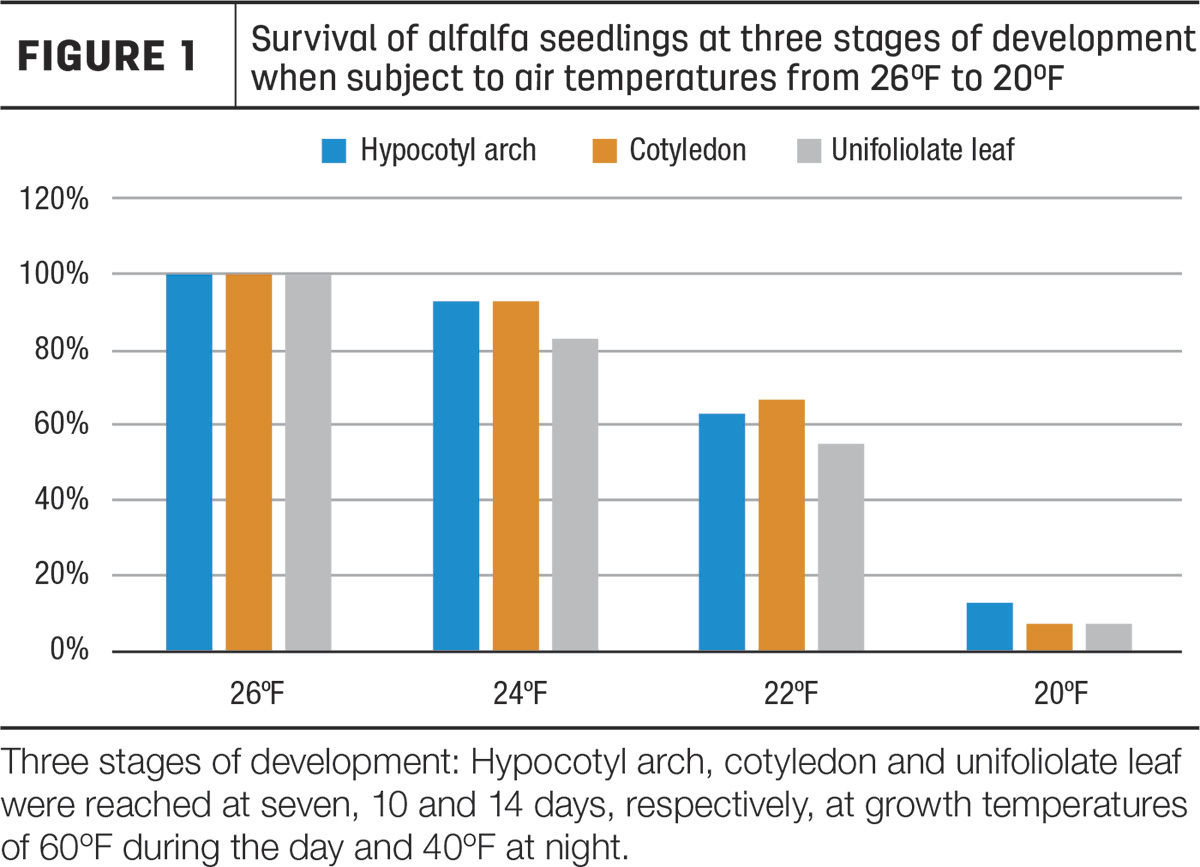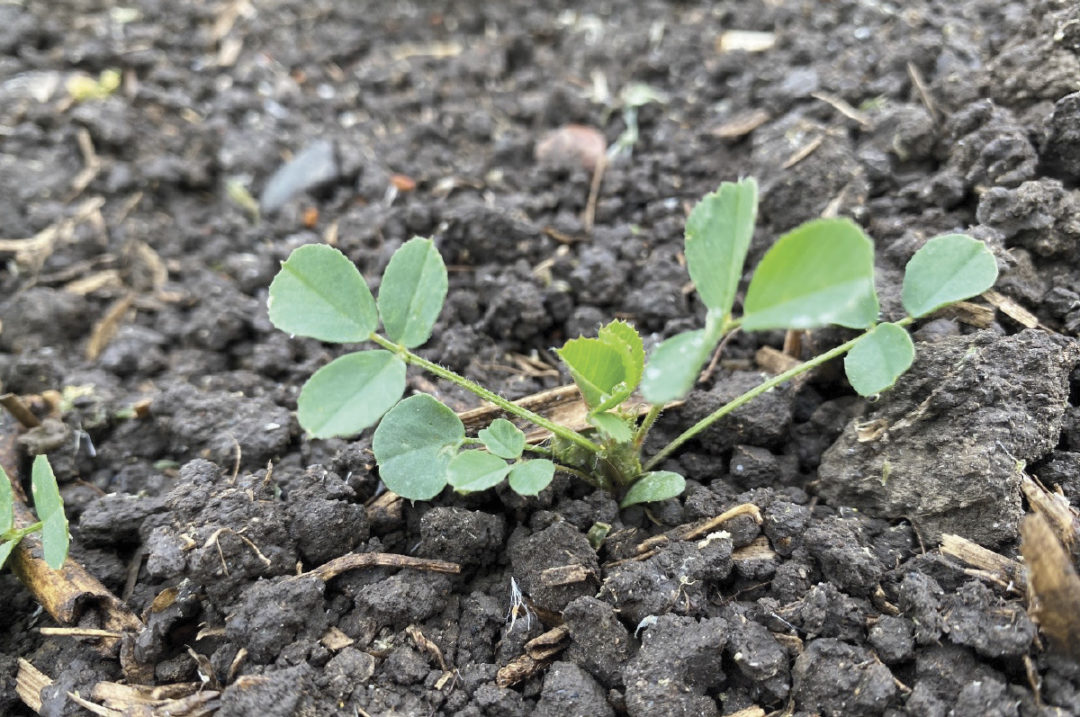Spring seedings provide optimal temperatures and moisture for establishment and growth of alfalfa. In the primary alfalfa growing regions of Minnesota and Wisconsin, typical recommended spring-seeding dates range from April 15 to May 15. With an April seeding date and an average first cutting at about 60 days following seeding on July 1, two additional cuts can occur by early September while still allowing about 40 days of regrowth before the first killing frost. This can result in as much as a one metric ton/acre total season yield advantage compared to seeding in mid-May.
Is there a risk of early seeding?
Alfalfa germination rate is affected by soil temperature. Alfalfa can germinate at temperatures near freezing (32ºF), but at 32ºF, about 15 days are required to reach 50% germination. At 50ºF, only three days are required to reach 50% germination. Therefore, at low temperatures, individual seedlings will slowly emerge, while at higher temperatures, all seedlings will emerge together. This may be a factor in alfalfa seedling emergence in crusted soils, as the collective push of many seeds can better crack and break crusted soils. The risk associated with crusted soils can be minimized by planting at a 1/4- to 1/2-inch depth into loam and clay soils, by practicing conversation tillage that leaves some plant residue on the surface or by using small-grain companion crops. Risks of crusting are greatly reduced on sandy soils.
Alfalfa seedlings have freezing tolerance. Although temperatures below 28ºF can kill soybean and corn seedlings, alfalfa seedlings (up till the unifoliolate stage) can tolerate air temperatures as low as 24ºF for several hours when germinated and hardened under early spring temperature and day length. However, temperatures of 20ºF and below dramatically reduce alfalfa seedling survival.
What is the probability of air temperatures of 24ºF and below? It depends on your location, but in southern Minnesota, it is unlikely after the first of May. Based on probabilities of various spring freezing temperatures in Minnesota obtained from a Minnesota Department of Natural Resources website, it appears there is less than a 10% chance of 24ºF temperatures. Therefore, with seeding as early as April 15, and seedlings likely in the cotyledon to unifoliolate stage after May 1, there is a minimum risk for loss of seedlings.
Beginning at the third trifoliolate leaf stage, seedlings have less frost tolerance than newly germinated seedlings. Plants may experience frost injury at temperatures of 24ºF and below. Typical symptoms are browning of trifoliolate leaves near the top of the canopy. Although a late frost can damage the herbage, it often does not affect survival because, after three weeks, seedlings have undergone contractile growth, resulting in the potential for new growth points at or below the soil surface.
Spring frost is often localized and influenced by topography within a field. It can be less if alfalfa is seeded with a small-grain companion crop. If frost damage to alfalfa is observed, stands should be evaluated in a week to determine plant populations. To achieve productive long-term stands, it is desirable to have a minimum of 20-30 plants per square foot in the fall of the seeding year; so if stands are less than that level in the spring, consider no-till seeding an additional 10 pounds per acre of alfalfa.

Does variety selection affect freezing tolerance?
Important traits, such as winter survival and fall dormancy, do not affect freezing tolerance in the spring. We found that varieties with fall dormancy of 3, 4 and 5 had a similar tolerance to freezing. In addition, the "Roundup-ready" trait had no effect on frost tolerance.
Summary
Maximize seeding year potential by early seeding. Early seeding will allow seedlings to take advantage of spring moisture conditions and start off the growing season with the potential for at least three cuts in the seeding year.
Seed as early as field conditions allow, but select a date to avoid air temperatures of 24ºF and below. Review the long-term probabilities of temperatures of 24ºF and below in your area.
Watch the seeding depth. At low soil temperatures, alfalfa emerges slowly and crusting of soils caused by spring rains can reduce emergence and stand establishment. The maximum depth for seeding on most medium- and fine-textured soils is 1/4-1/2 inch.
Use seed treated with Apron XL (Mefenoxam). With extended periods of germination under cool conditions, alfalfa seeds and seedlings are vulnerable to infection by pythium and other soil fungi. Pythium are fungi that can infect alfalfa seeds before they germinate or after seedlings have emerged. They cause “damping off” and can greatly affect stand establishment.
Inspect new alfalfa stands about a week after freezing temperatures. If populations are inadequate for long-term productive stands, no-till alfalfa seed to thicken the stand.









